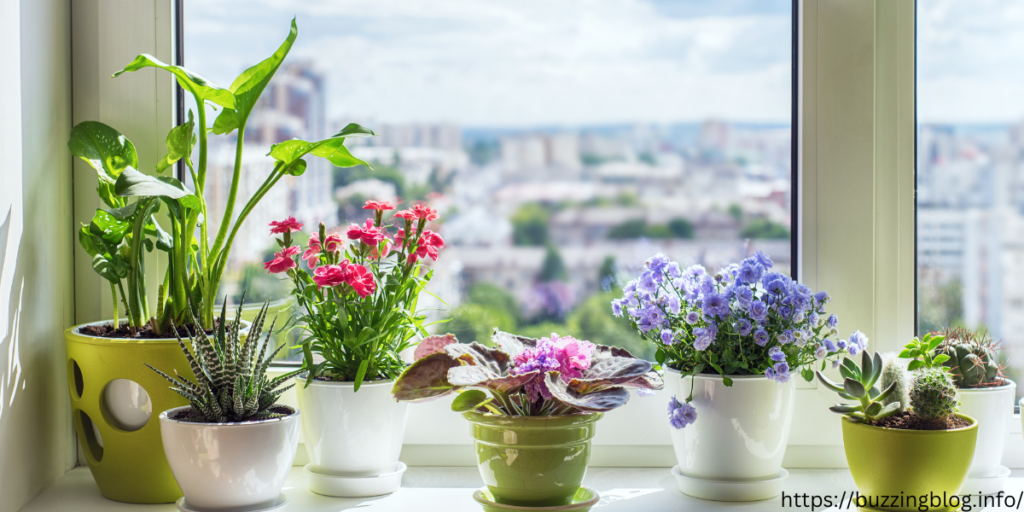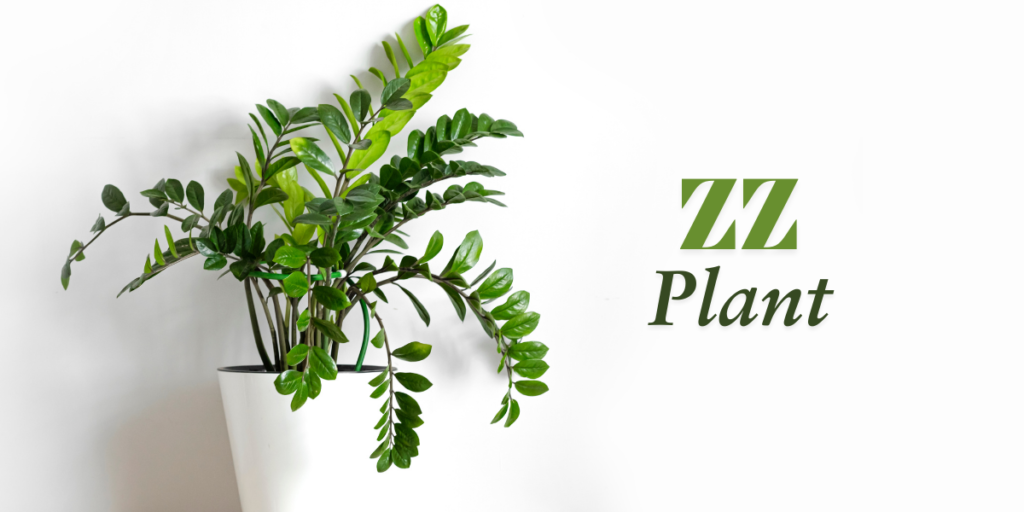Small House Plants: Benefits, Care Tips, and Best Choices
Small house plants have gained immense popularity in recent years for their ability to add a refreshing touch to any indoor environment without taking up too much space. Ideal for urban homes, apartments, and workspaces, small house plants not only improve the aesthetic appeal of a room but also offer various mental and physical health benefits. This comprehensive guide will cover everything you need to know about small house plants, from their benefits and popular types to effective care techniques. Whether you are an experienced plant enthusiast or new to indoor gardening, these insights will help you nurture healthy, vibrant plants in any environment.
The Benefits of Small House Plants
Why Choose Small House Plants?

Small house plants offer a multitude of benefits that go beyond just decorating your living space. Let’s explore why small plants are an excellent choice for indoor environments and how they can positively impact our health and well-being.
Enhancing Indoor Air Quality
Indoor air quality is a crucial factor for overall health, particularly in urban environments where air pollutants are prevalent. Small house plants play an important role in purifying the air by absorbing toxic substances and releasing oxygen. Plants like spider plants, ferns, and snake plants are particularly effective at filtering out common indoor pollutants, such as:
- Formaldehyde: Found in household products like paints, adhesives, and cleaning agents.
- Benzene: Often emitted from plastics, synthetic fibers, and detergents.
- Carbon monoxide: A dangerous gas commonly present in homes with poor ventilation.
By adding small plants to your indoor space, you’re naturally enhancing air quality, which can lead to fewer respiratory issues, fewer headaches, and improved sleep quality. Air-purifying plants work continuously, providing a clean, healthy atmosphere for both homes and offices.
Boosting Mental Health and Productivity
The presence of greenery has been proven to have a calming effect, reducing anxiety, stress, and fatigue. Small house plants are an easy way to introduce this soothing influence into your daily life. In workplaces or home offices, plants have been shown to:
- Improve concentration and memory: Studies indicate that natural elements in workspaces can enhance focus and cognitive performance.
- Reduce stress: Simply observing plants can lower blood pressure and promote a sense of calm.
- Increase creativity and productivity: Greenery encourages creative thinking and problem-solving.
Small house plants are a great option for desks, bookshelves, or window sills where their calming presence can have a direct positive impact on mood and productivity.
Aesthetic Appeal and Space Efficiency
Small house plants are perfect for decorating compact spaces. Their modest size makes them versatile, allowing them to fit anywhere without overwhelming the area. Small plants can be grouped together for a lush display or placed individually to accentuate particular areas. They bring a natural element that complements modern, minimalist, or eclectic decor styles, enhancing the visual appeal of any space.
Some popular options like succulents or cacti come in unique shapes and colors, adding variety and personality to interiors. They’re also an excellent choice for those who want to add greenery but have limited room, as they can be easily arranged on shelves, desks, or even hung in pots.
Popular Types of Small House Plants
Top Small House Plants for Every Space
Choosing the right type of plant is essential to ensure it thrives in your specific indoor environment. Here’s a detailed look at popular small house plants and what makes each of them unique.
Succulents
Succulents are often the first choice for beginners and busy plant owners because they’re incredibly resilient and require minimal care. These plants store water in their leaves, making them tolerant of dry conditions. A few popular types include:
- Echeveria: Known for its rosette shape and vibrant colors, Echeveria adds a sculptural element to your space.
- Aloe Vera: Famous for its medicinal uses, Aloe Vera also makes a great small house plant due to its low water needs.
- Jade Plant: With thick, shiny leaves, the Jade plant is slow-growing and can last for years.
Succulents thrive in bright, indirect sunlight and can go for extended periods without water, making them suitable for sunny windowsills or well-lit spaces.
Spider Plant (Chlorophytum comosum)
The spider plant is celebrated for its ease of care and air-purifying abilities. It has long, arching green leaves with white or yellow stripes, giving it a unique look. Key features include:
- Air Purification: It’s effective at removing pollutants like carbon monoxide and xylene.
- Low Maintenance: Spider plants can tolerate occasional neglect, making them ideal for beginners.
- Propagation: They produce “pups” or plantlets that can be easily propagated, allowing you to grow new plants.
Spider plants prefer indirect sunlight and moderate watering, thriving in a variety of indoor conditions, including low humidity.
Snake Plant (Sansevieria trifasciata)
The snake plant, often called “mother-in-law’s tongue,” is popular for its low maintenance needs and unique upright leaves. It’s one of the best plants for filtering toxins, including formaldehyde, benzene, and toluene. Key care points:
- Tolerant of Low Light: It can survive in dimly lit areas, making it suitable for rooms with limited natural light.
- Drought Resistant: The snake plant’s thick leaves store water, so it only needs occasional watering.
With its modern, sculptural appearance, the snake plant can add elegance to any room while improving indoor air quality.
Pothos (Epipremnum aureum)
Pothos, or “Devil’s Ivy,” is known for its trailing vines and heart-shaped leaves. It’s an adaptable plant that can grow in various lighting conditions, from low light to bright, indirect light. Key features include:
- Fast Growth: Pothos is a vigorous grower, adding lush greenery quickly.
- Air Purifying: It’s effective at removing airborne toxins, including formaldehyde and benzene.
- Variety: Pothos comes in different types, such as Golden Pothos, Marble Queen, and Neon Pothos, each with unique leaf colors and patterns.
Pothos thrives with minimal watering and is tolerant of low humidity, making it perfect for indoor spaces like bathrooms, bedrooms, and offices.
ZZ Plant (Zamioculcas zamiifolia)
The ZZ plant is valued for its glossy, dark green leaves and high tolerance for neglect. It grows slowly and can tolerate low light and irregular watering. Key points to note:

- Low Light Tolerance: Ideal for dimly lit areas where other plants may not thrive.
- Drought Resistance: Like the snake plant, the ZZ plant stores water in its roots, requiring only occasional watering.
The ZZ plant’s low-maintenance nature and appealing structure make it a great choice for offices, bedrooms, or spaces with minimal natural light.
How to Care for Small House Plants
Essential Tips for Small House Plant Care
Proper care is crucial for keeping your plants healthy and vibrant. Here’s a deeper dive into the key elements of small house plant care.
Light Requirements
Each plant has different light needs, but generally, small house plants prefer indirect or low light. Here are some tips:
- Direct Sunlight: Some plants, like succulents and cacti, thrive in direct sunlight but can still tolerate filtered light.
- Indirect Light: Most tropical plants, like pothos and spider plants, prefer indirect sunlight, which can be provided by placing them near a window with a sheer curtain.
- Artificial Light: Grow lights are a practical solution for spaces without natural light. They mimic sunlight and help plants like ZZ plants and snake plants thrive indoors.
Watering Techniques
Watering needs vary, but small plants generally prefer to dry out slightly between watering sessions. Some tips include:
- Check Soil Moisture: Insert a finger about an inch deep; if the soil feels dry, it’s time to water.
- Watering Frequency: Succulents and cacti need less frequent watering (about once every two weeks), while tropical plants may require weekly watering.
- Avoid Overwatering: Ensure pots have drainage holes to prevent water from accumulating, as stagnant water can lead to root rot.
Humidity Control
Many small house plants thrive in higher humidity levels, particularly tropical varieties. Tips to maintain humidity include:
- Misting: Light misting helps increase moisture for plants like ferns.
- Humidifier: Using a humidifier is effective, especially during dry winter months.
- Humidity Trays: Place plants on a tray filled with pebbles and water to boost moisture levels around the plants.
Soil and Pot Selection
The right soil and pot are essential for plant health. General tips include:
- Potting Mix: Use a potting mix with good drainage. For succulents, a cactus mix is ideal, as it allows water to pass through easily.
- Pot with Drainage Holes: Prevents water from sitting at the bottom and causing root rot.
- Repotting: Small plants generally require repotting every 1–2 years as they outgrow their pots.
Fertilizing Your Small House Plants
Fertilizing provides essential nutrients for growth. Tips for fertilizing include:
- Use Balanced Fertilizer: Apply a balanced, water-soluble fertilizer every 2–3 months for most plants.
- Seasonal Fertilizing: Reduce fertilizing during winter, as plants typically enter a dormant phase and require fewer nutrients.
Common Challenges and How to Overcome Them
Troubleshooting Small House Plant Issues
Yellowing Leaves
Yellow leaves often indicate overwatering or lack of drainage. Ensure the pot has holes and reduce watering frequency. Yellowing can also result from nutrient deficiency, so consider applying a balanced fertilizer.
Wilting or Drooping Leaves
This can signify underwatering, low humidity, or overwatering. Check the soil moisture and adjust your watering schedule. Misting tropical plants can also help combat wilting.
Pest Infestations
Common pests include spider mites, aphids, and mealybugs. Inspect plants regularly and remove pests with a mild soap solution or insecticidal spray.
Mold and Fungus Growth
Mold often results from excess moisture or poor air circulation. Improve ventilation and reduce watering frequency. Removing the top layer of soil and replacing it with fresh soil can also help.
Frequently Asked Questions about Small House Plants
Q1: What are the best small house plants for beginners?
A1: Beginner-friendly plants include snake plants, pothos, and spider plants due to their hardiness, low light tolerance, and minimal watering needs.
Q2: How often should I water small house plants?
A2: Watering depends on the plant type. Generally, allow the top inch of soil to dry out before watering again.
Q3: Can small house plants survive in low light?
A3: Many small plants, like snake plants, ZZ plants, and pothos, tolerate low light but benefit from occasional indirect sunlight.
Q4: How can I increase humidity for my small house plants?
A4: To raise humidity, mist plants, place them near water, use a humidity tray, or set up a humidifier.
Q5: Why are my small house plant leaves turning yellow?
A5: Yellowing may indicate overwatering, poor drainage, or a nutrient deficiency. Check the plant’s water needs and use a balanced fertilizer if needed
Conclusion
Small house plants offer an accessible, low-maintenance way to bring nature into indoor spaces. By choosing the right plants and understanding their needs, you can enjoy the many benefits of greenery in your home or office. Follow these care tips to create a thriving indoor garden that enhances your space, improves air quality, and brings a touch of tranquility to your life. Happy planting!












Post Comment